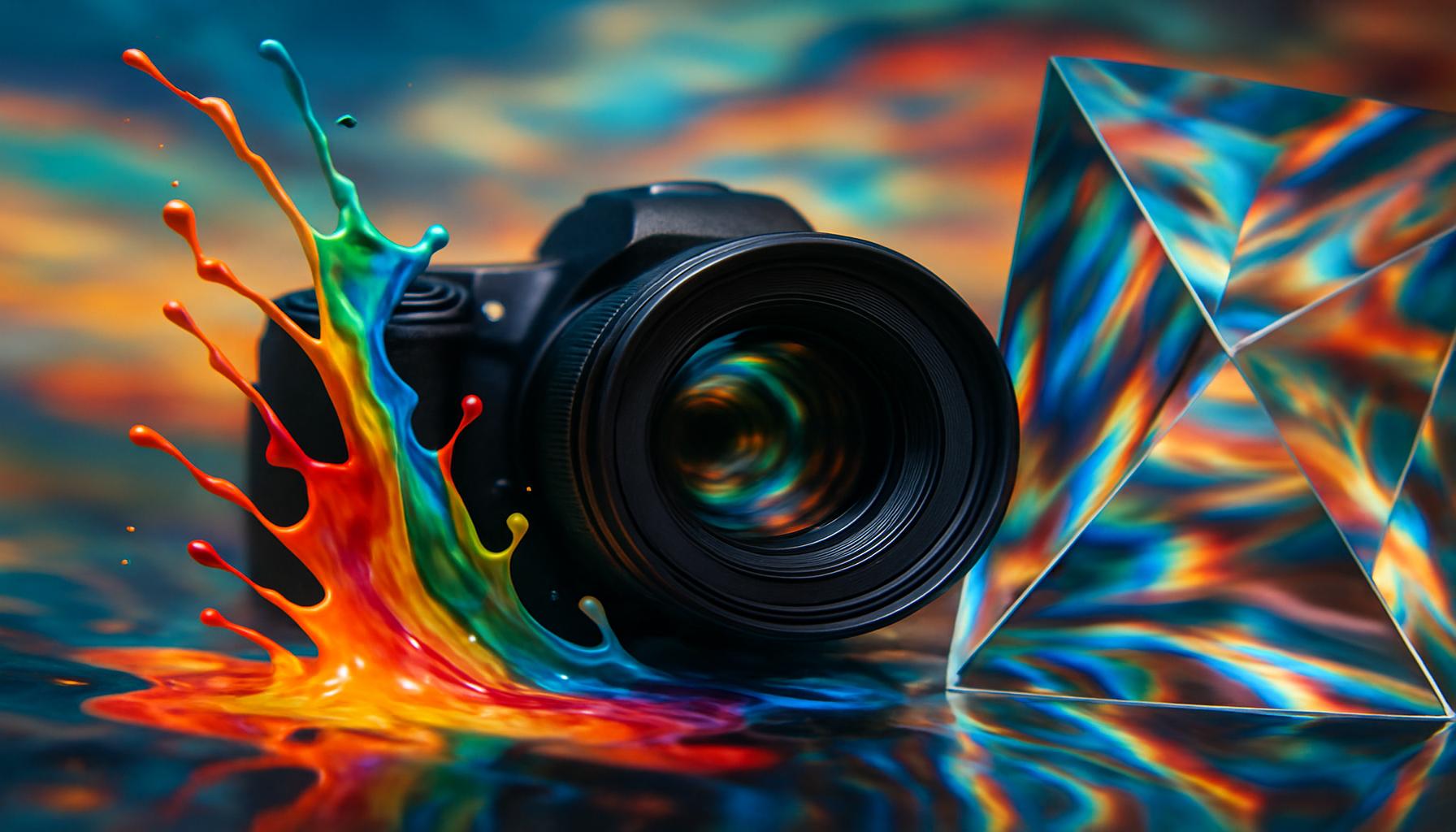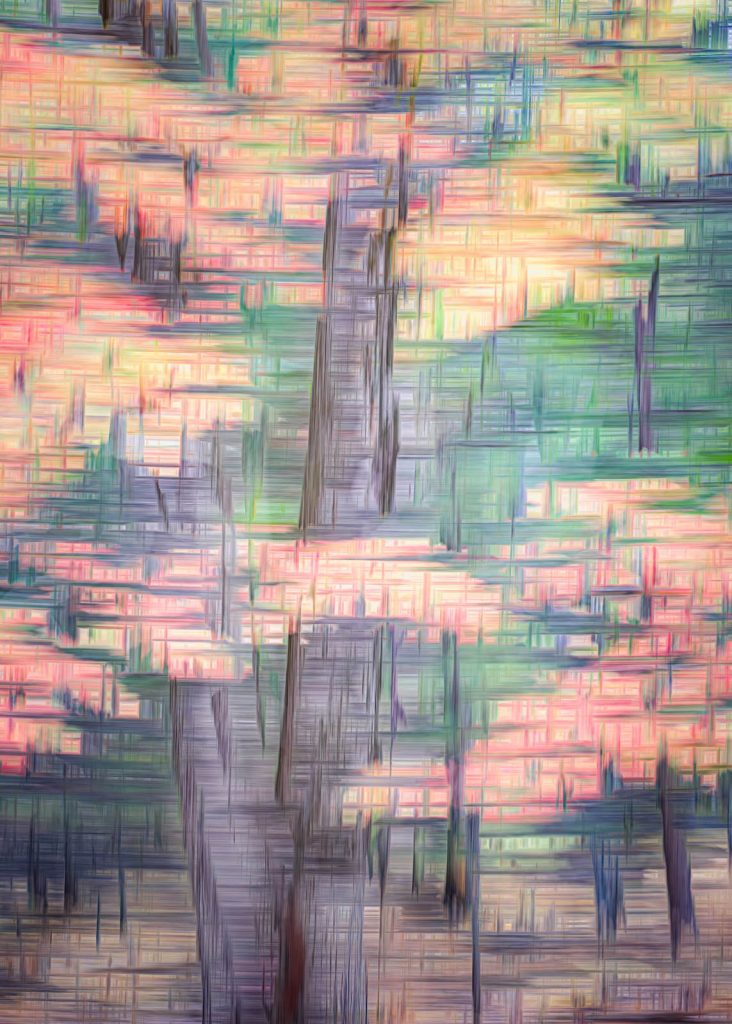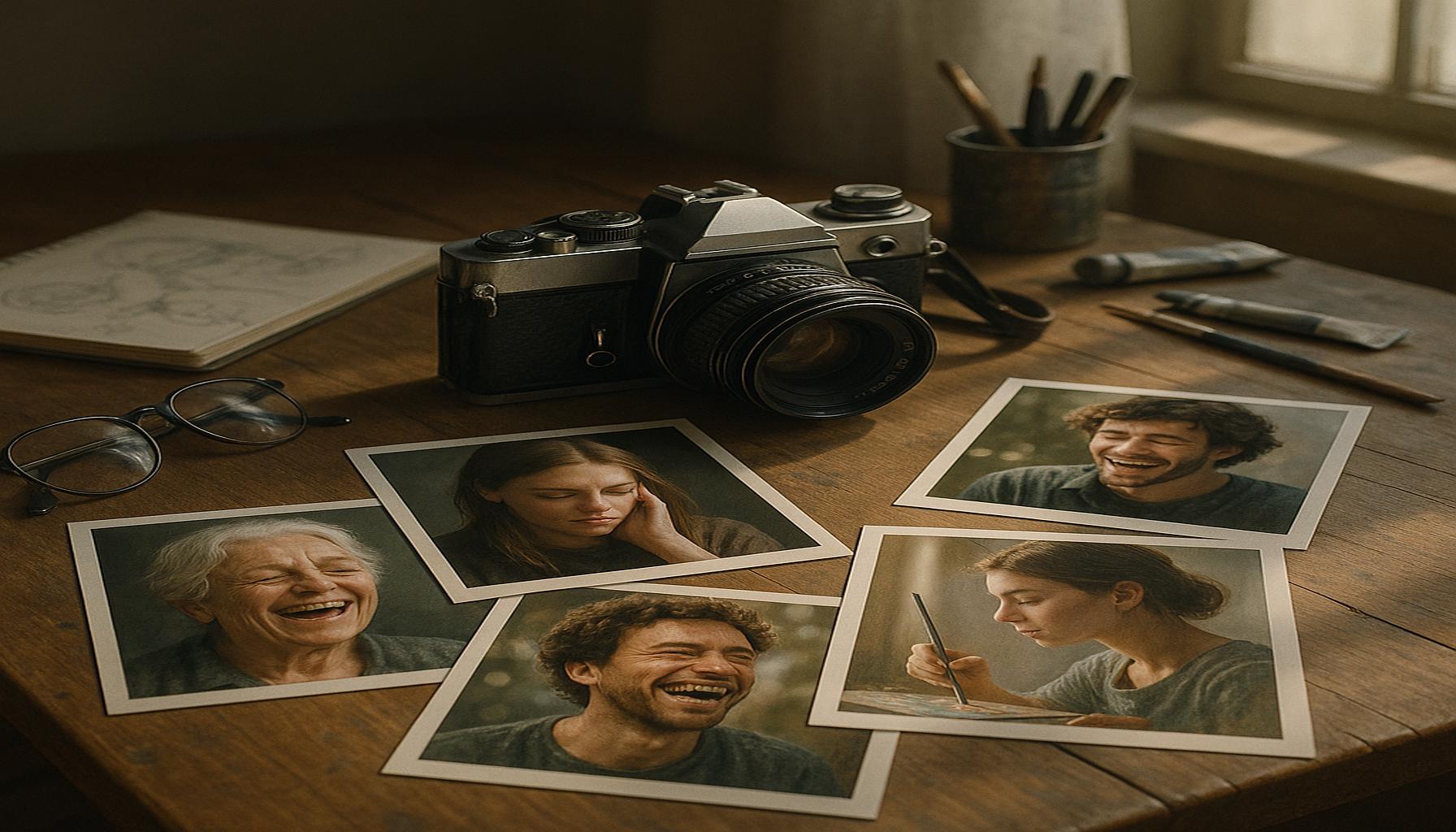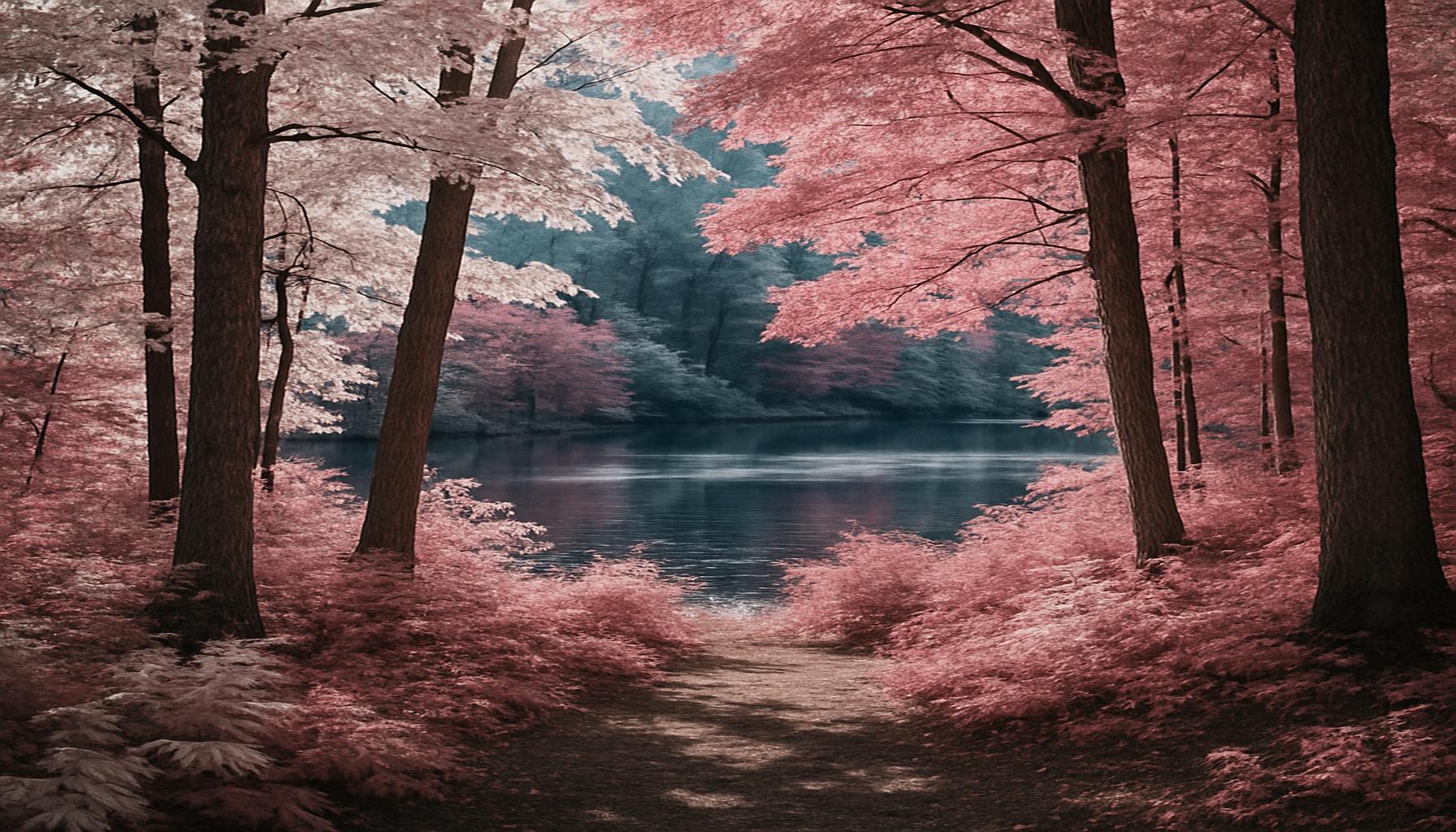Abstract Photography: Exploring Creativity Beyond Reality

Exploring Abstract Photography
In a realm where art converges with imagination, abstract photography serves as a captivating bridge between reality and perception. This unique genre challenges the conventional boundaries of visual storytelling, allowing artists and viewers alike to explore a spectrum of emotions and thoughts through non-representational forms.
At its core, abstract photography transcends ordinary visuals by focusing on elements such as:
- Shapes: Geometric patterns that distort perception can create compelling images that engage viewers’ minds. For example, an array of circles or triangles might evoke a sense of harmony or chaos, depending on their arrangement and color.
- Colors: Vivid palettes not only serve an aesthetic purpose but also evoke feelings. A photograph saturated with blues and greens may create a serene atmosphere, while fiery reds and oranges can provoke passion or unrest.
- Textures: Layers of texture can invite tactile imagination, allowing viewers to feel the surfaces depicted even without physical contact. Consider close-ups of peeling paint or rough bark that reveal intricate details, each telling its own story.
- Light: Innovative plays with light can highlight dimensionality, creating dramatic contrasts that draw the eye. Techniques such as backlighting can add depth, transforming a simple subject into a three-dimensional experience.
Unlike traditional photography, which seeks to capture moments as they are, abstract photography encourages a more personal interpretation. This flexibility allows each viewer to project their thoughts and emotions onto the artwork. The genre has indeed gained traction in the United States, with various art communities championing photographers who redefine this craft and showcase works that provoke deep contemplation. Art shows and festivals dedicated to abstract photography have emerged, underscoring its rising popularity.
As we journey through the realm of abstract photography, we will uncover:
- The history and evolution of abstract photography, including pivotal moments and key figures in its development.
- Techniques that inspire creativity, such as the use of digital manipulation and alternative printing methods.
- Notable abstract photographers and their signature styles, from pioneers like Alfred Stieglitz to contemporary artists pushing the envelope today.
Join us as we explore this fascinating medium, where creativity knows no bounds and the essence of art lies beyond the mere representation of reality. Whether you are a seasoned photographer or a curious observer, abstract photography invites you to challenge your perceptions and embrace a world of limitless possibilities.

DIVE DEEPER: Click here to discover the evolution of sculpture
The Evolution of Abstract Photography
To truly appreciate the essence of abstract photography, it is vital to understand its evolution and the artistic movements that paved the way for this innovative genre. As a standalone discipline, abstract photography emerged against a backdrop of various artistic influences, marked by a departure from traditional representation toward a focus on conceptual expression. Key moments in art history highlight the gradual embrace of abstraction across various mediums, ultimately shaping the photographic landscape.
In the early 20th century, the ground was laid for abstract photography by movements such as Surrealism and Modernism. Photographers including Alfred Stieglitz, who played a crucial role in promoting photography as a legitimate art form, began to experiment with composition and perspective, diverging from purely documentary styles. Stieglitz’s work laid a foundation for future abstract photographers by emphasizing emotional resonance and subjective interpretation.
As the decades progressed, pioneers like Laszlo Moholy-Nagy and Minor White took the abstract movement further, challenging conventional ideas of representation. Moholy-Nagy’s explorations with light and abstraction were revolutionary; he famously stated, “Photography can be an instrument that reveals the invisible,” perfectly encapsulating the spirit of abstract photography. On the other hand, Minor White’s imagery deeply integrated emotional and spiritual themes, inviting viewers to connect on a profound level.
The late 20th century saw an influx of technological advances, with the introduction of digital photography adding new dimensions to the genre. The digital format allowed artists to manipulate images more freely, leading to an explosion of creativity that further blurred the lines between reality and abstraction. Today, contemporary artists leverage this technology to create striking compositions that subvert the viewer’s expectations, inviting them to scrutinize the mundane and find beauty in the unexpected.
Techniques That Shape the Abstract Vision
As abstract photography continues to evolve, it draws upon a variety of techniques that further enhance its appeal. Here are some of the prominent methods employed by artists today:
- Double Exposure: This technique involves combining two distinct photographs into a single frame, creating a dreamlike effect that challenges perceptions of reality.
- Long Exposure: By utilizing extended shutter speeds, photographers can capture the movement of light and subjects, generating a fluid impression that distorts conventional forms.
- Digital Manipulation: Software tools allow for intricate editing and layering, enabling artists to craft unique visual narratives through color, texture, and shape alterations.
- Camera Angles and Cropping: Abstract photographers often experiment with unusual angles and tight cropping to create unexpected compositions that ignite curiosity.
These techniques not only push the boundaries of photography but also empower artists to express their inner visions, giving life to the profound connection between creativity and perception in abstract photography.
| Category | Advantages |
|---|---|
| Creative Expression | Abstract photography allows artists to convey emotions and visions that transcend reality. |
| Innovative Techniques | Utilizing tools such as long exposure, double exposure, and intentional camera movement, photographers create unique visual experiences. |
| Visual Interpretation | Abstract photography encourages viewers to interpret and engage with the artwork personally. |
| Framework for Imagination | This genre of photography stimulates the imagination, pushing boundaries and sparking conversations about perception. |
In the realm of abstract photography, traditional boundaries dissolve, inviting creatives to explore uncharted territories of visual interpretation. Artists can redefine their perspectives, challenging the viewers’ responses to familiar subjects. Emphasizing the use of transformative techniques like blur, distortion, and color manipulation, abstract photographers can elicit profound emotional reactions and nuanced explorations of themes such as identity, absence, and existence. This genre frequently collaborates with modern technologies, enriching the art form and offering endless avenues for experimentation. By showcasing an ethereal blend of forms and colors, abstract photography not only stands as a testament to artistic innovation but also acts as a mirror that reflects our inner thoughts and feelings onto the vast canvas of reality.
DISCOVER: Click here to learn how therapeutic knitting can enhance your well-being
Interpreting Abstract Photography: The Role of the Viewer
One of the most fascinating aspects of abstract photography is the unique relationship it fosters between the viewer and the artwork. Abstract images often eschew clear representation, embracing ambiguity and nuance. This intentional vagueness invites individuals to engage in personal interpretation, drawing from their own experiences and emotions. As a result, every viewer brings a distinct lens to the artwork, transforming the act of viewing into a collaborative dialogue between the artist’s vision and the audience’s imagination.
For example, consider the works of modern abstract photographers like Elena Shumilova, who incorporates elements of nature in her thought-provoking compositions. Her imagery, often showcasing ethereal landscapes or intimate details, encourages viewers to reflect on themes of existence, solitude, and connectedness. In this way, abstract photography becomes a mirror, reflecting not only the artist’s intentions but also the inner world of the observer.
The Emotional Weight of Abstraction
The emotional response elicited by abstract photography is another vital component of the genre. While traditional photography often aims to convey a narrative or depict a subject in a direct way, abstract photography invites feelings that may be harder to articulate. The fragmented forms, distorted colors, and surreal compositions can stir wonder, curiosity, or even discomfort. For instance, taking a look at works by David Hockney, who famously utilizes vibrant colors and unique perspectives, can heighten moods and provoke thought in ways conventional realistic photography struggles to achieve.
This emotive capacity is essential for artists aiming to transcend simple visual representation. By engaging the viewer’s emotions, abstract photography can act as a conduit for exploring complex issues such as identity, culture, and the human condition. Such powerful connections encourage discussions on pertinent societal themes through an abstract lens, stimulating dialogues that may not arise within more literal portrayals.
The Intersection of Abstract Photography and Technology
In today’s digital era, technology has become a significant player in the landscape of abstract photography. The integration of tools like smartphone cameras and advanced editing apps democratizes the medium, making it accessible to everyone. Consequently, anyone with a smartphone can capture and manipulate images, reshaping reality in fantastical ways. This allows for a broader spectrum of creative expression and gives rise to new generations of abstract photographers who explore different themes and styles.
Furthermore, online platforms and social media have created a space for abstract photographers to showcase their work to a global audience. Artists can share their visions instantaneously, fostering an interconnected community that thrives on inspiration and innovation. The hashtag culture prevalent on platforms such as Instagram promotes the discovery of emerging talents and allows for varied, eclectic interpretations of abstract photography.
In essence, the marriage of technology and abstract photography not only transforms how art is created and consumed but also influences the way artists approach their work, leading to an ever-expanding realm of creativity. The potential for expression continues to grow, leaving viewers eager to explore the depths of this captivating genre and challenging them to delve into their own creativity beyond the constraints of reality.
DIVE DEEPER: Click here to discover innovative painting techniques
Conclusion: Embracing the Infinite Possibilities of Abstract Photography
In conclusion, abstract photography serves as a compelling lens through which we can explore creativity beyond the confines of reality. It distills the essence of emotions and visions into captivating visuals that invite introspection and personal interpretation. The unique interplay between the artist’s intent and the viewer’s experience fosters a rich dialogue that extends well beyond the artwork itself. Each encounter with abstract images is an opportunity for deeper engagement, encouraging individuals to project their own feelings, thoughts, and backgrounds into the work.
The emotional weight of abstraction confronts viewers with feelings and ideas that may be challenging to articulate, pushing the boundaries of how we perceive art and ourselves. As emerging technologies democratize the medium, they empower a new generation of artists to experiment with perspectives and styles that redefine what photography can be. This evolution not only amplifies creativity but also cultivates a vibrant community of abstract photographers who share their journeys and insights across the globe.
Ultimately, abstract photography urges us to question the nature of reality and encourages us to explore the myriad possibilities of representation. As we continue to delve into this genre, we uncover not only the layers of the art but also the infinite layers within ourselves. For those willing to step into this enchanting world, the experience can be transformative, offering profound insights and a renewed appreciation for creativity in its most liberated form.



